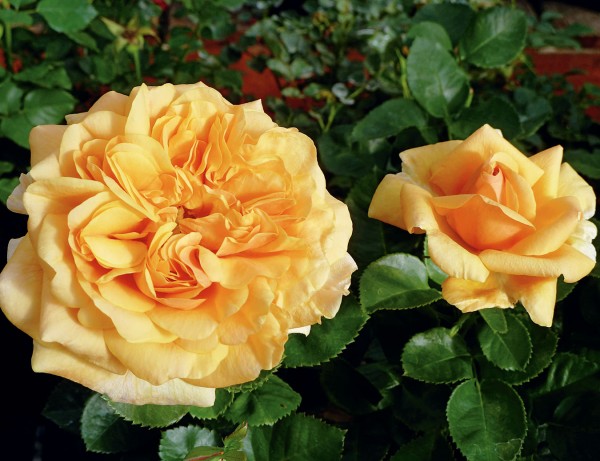Quick! What do explorer Sir Alexander Mackenzie and entertainer Lady Gaga have in common? Clue: he is hardy, disease-resistant, and a deep red and hot pink. She, by contrast, is an orange and yellow hothouse favourite. While you have likely guessed that both are roses—just two of the 20,000 varieties and cultivars in today’s world of over 100 rose species—what charms gardeners and rose lovers alike are some of the unique stories that have led to their naming.
At the top of that list is the gorgeous apricot-hued Loretta Lynn Van Lear, created by Fraser Valley rose breeder par excellence, Brad Jalbert, from whom Sony Music recently bought the naming rights as a gift to the singer to celebrate her 50 years in the music business. While one of Lynn’s famous songs never promises her fans a rose garden, Jalbert’s small Langley Select Roses family farm, rimmed with tall cedars and firs over which bald eagles wheel, is a haven for rose lovers from all over.
Now 47 and at the top of his game (this year he has been invited to judge at the prestigious rose trials at The Hague), Jalbert has come a long way from the “young geek” he claims he was while fascinated by the two rose bushes that grew at the entrance to his granny’s East Vancouver home. “One was an unscented Peace rose and the other a scented Mister Lincoln. So young, I became intrigued by the magic of flowers,” Jalbert says.
Before the dawn of the Internet, he started reading old books, becoming one of the youngest members of both the Canadian Rose Society and the Vancouver Rose Society, where an old German fellow, George Mander, mentored him in the mechanics of breeding.

Now a keen observer who can tell just by looking at a rose what its lineage is, Jalbert’s warm brown eyes fondly sweep this year’s seeding crop in the greenhouse he and his father built in 1990, their initials still carved on the concrete floor. “You know, in here, it’s survival of the fittest,” he says. “Good breeding programs encourage the spreading of diseases, so that only the strong survive. I want the heartiest stock available.”
Like all artistic careers, his rose-breeding is a passionate expertise developed over the years; Jalbert lives and breathes roses. When the mother plants bloom in the summer (Loretta Lynn was bred from the famous Livin’ Easy rose), he removes the anthers which hold the pollen, and leaves behind the stigma, “the girly part of the flower”. The collected pollen is dried for a day or so, then spread onto the female part of the mother plants. Unlike many breeders who use a paintbrush, Jalbert uses his finger to better “feel” the pollen, and also the stigma, to ascertain when both are at their peak for breeding.
Late in the fall, he harvests the rosehips, extracting the seeds and germinating them, letting the weak seedlings die. Here in the greenhouse, where in their first winter 22 years ago the power went down for three days and he had to stay up all night keeping it warm with his gas barbecue, the seedlings grow. Of, say, 3,000 seedlings, about 300 will be left after the first year to be potted to larger pots and then tested outside in the elements. Since B.C. is cool and damp, much of Jalbert’s rose stock goes to hot and cold climates in Eastern Canada and the Southern States for testing in those conditions. After five or more years, he may retain only 30 seedlings.
Like all beautiful things, roses enjoy different styles. In the fifties to seventies, it was all about the pretty flower. Now, the 21st century is all about fragrance and health without pesticides. Jalbert’s current favourite is Rosemary Harkness, an apricot and pink über-fragrant number bred in the U.K. that he crosses with other roses like the aptly named Knock Out, which is impervious to black spot and other diseases.
While we may be tickled pink by the sometimes silly, sometimes serious names the roses receive, for Jalbert, “the biggest charge is when folk say they have planted a rose of mine and love it. It is an honour and personal joy.”









